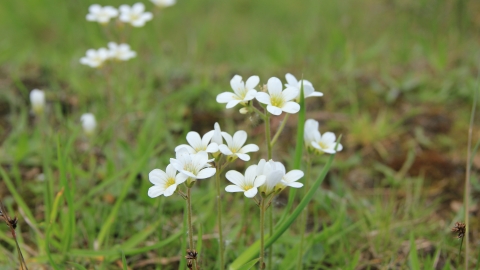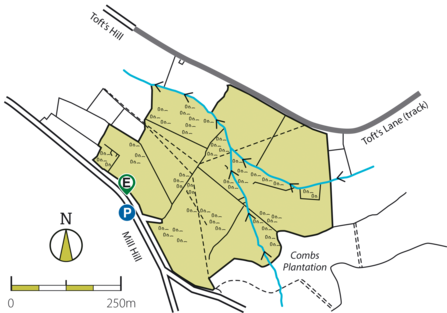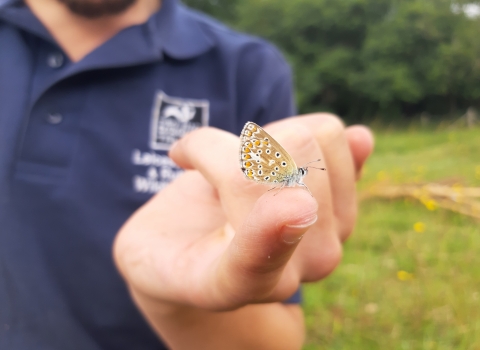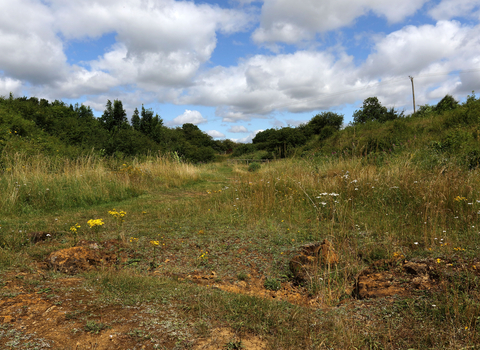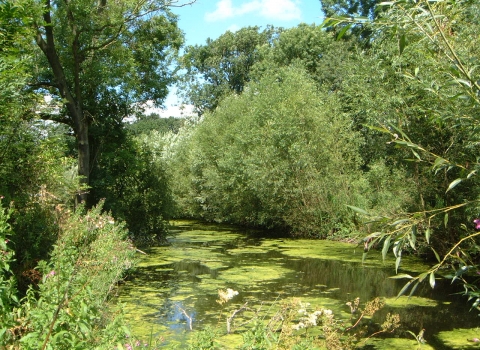Location
Know before you go
Dogs
When to visit
Opening times
Always openBest time to visit
SummerAbout the reserve
This is one of the best nature reserves in Leicestershire for admiring the biggest of views and the tiniest of flowers. As you enter the nature reserve, on the right is a pill box dating from the Second World War. From the top of the slope on your right, where the hedgerow meets the plantation, you’ll have spectacular views across the Vale of Belvoir and Trent Valley.
Although some of the grassland was once covered with herbicides and is now species poor, some areas, for example behind the fence, is full of interesting plants including meadow saxifrage. Common spotted-orchids flower in June. Along the stream by the fence and into the woodland you can see soft shield-fern, common in western Britain, but unusual in Leicestershire with our drier climate.
A patch of gorse, with bright yellow flowers, gives the best display is the spring. Listen carefully: on hot sunny days, the seed pods can be heard cracking as they split open to scatter their seeds. Just before the far hedgerow there is a small enclosure on your left planted with alder trees. You can see the upright jointed stems of water horsetail, a primitive plant related to ferns, now relatively uncommon in Leicestershire. There are one or two adder’s-tongue ferns. These are difficult to find, but hopefully will spread across the reserve. From Toft's Lane, you can appreciate the mosaic of small fields, hedgerows and scattered scrub which make up this piece of old countryside, now a haven for birds, bats and invertebrates.
In a field close to Stathern, you'll see a field with several low platforms. These are thought to be remnants of an old hall, once the home of Colonel Francis Hacker, one of the officers supervising the execution of Charles I during the Civil War. Hacker was tried and executed in October 1660, his property confiscated, and the hall demolished. This field has a badger sett and the sandy soil attracts rabbits. The triangular field east of the entrance is the richest of the fields for botany and is designated a Local Wildlife Site. This field has wet areas, favouring ragged robin, greater bird’s-foot trefoil and the locally scarce whorl grass. In spring, marsh marigolds flower and betony plants bloom later in the summer.
The Trust was gifted the reserve by the administrators of the National Farming and Wildlife Advisory Group (FWAG). Leicestershire and Rutland FWAG in turn had been gifted them by a local woman, Mrs Shanks, who wanted to ensure they were maintained much has she had known the meadows.

